The Quehanna Wild Area is an immense landscape filled with many hidden secrets, and one of these is the fantastic ruins of the long-abandoned Kunes Camp.
Kunes Camp was built in the early 1900s as a hunting camp for a local family. It was constructed deep in the forest between two large boulders that served as walls for the structure.
Unfortunately, the camp had to be abandoned in the mid-1950s when the Curtiss-Wright Corporation purchased the land to do testing for peaceful uses for nuclear energy (You can still see the outside of the abandoned bunkers where they tested nuclear jet engines).
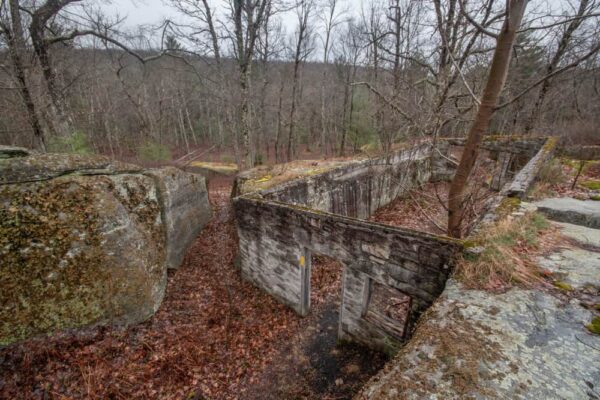
While the closure of the Quehanna Wild Area lasted less than 15 years, Kunes Camp was never rebuilt, leaving it to nature. However, despite being over 100 years old and being abandoned for more than 60 years, much still remains of the camp including all four walls of this amazing structure.
The most direct route to Kunes Camp in the Quehanna Wild Area is via the Kunes Camp Trail. This is a roughly two-mile trail that starts along the Quehanna Highway just south of the intersection with Wykoff Run Road.
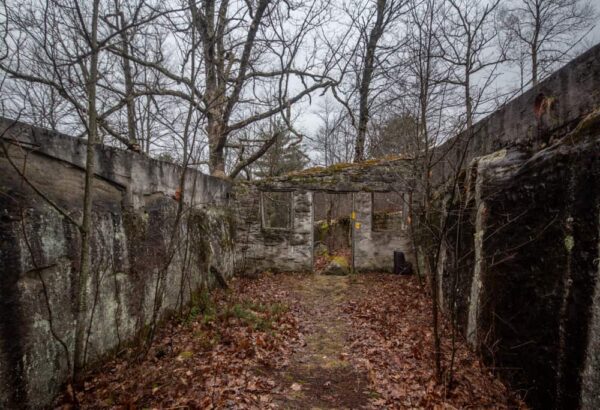
Kunes Camp is located at roughly the halfway point of the trail, 0.9 miles from the road. Since the trail literally runs right through the cabin ruins (in one door and out the other), it’s impossible to miss this amazing place if hiking the trail.
The Kunes Camp Trail cuts its way through a lightly-trafficked area in the southeastern corner of the Quehanna Wild Area and passes through an incredibly beautiful forest. I’ve seen reports that elk are common in this part of the forest, but I wasn’t lucky enough to see any during my visit.
The trail is a mixture of hiking on an old dirt road and along an established trail but is well marked the entire way with yellow blazes. It is also a very flat trail, with a loss of only about 100 feet over the nearly mile hike to Kunes Camp.
When I hiked here in mid-April, there was a lot of water and mud on the first third of the trail, and I’d say that it would have been completely impossible for me to keep my feet dry, so bear that in mind if hiking this Kunes Camp Trail.
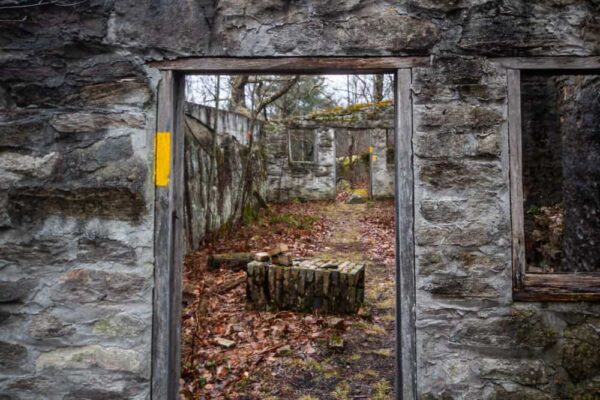
The area around Kunes Camp is a lot of fun to explore. The roof of this former hunting camp is completely gone as are most of the things that once sat in it. In fact, the only thing inside the building is the remnants of a brick chimney.
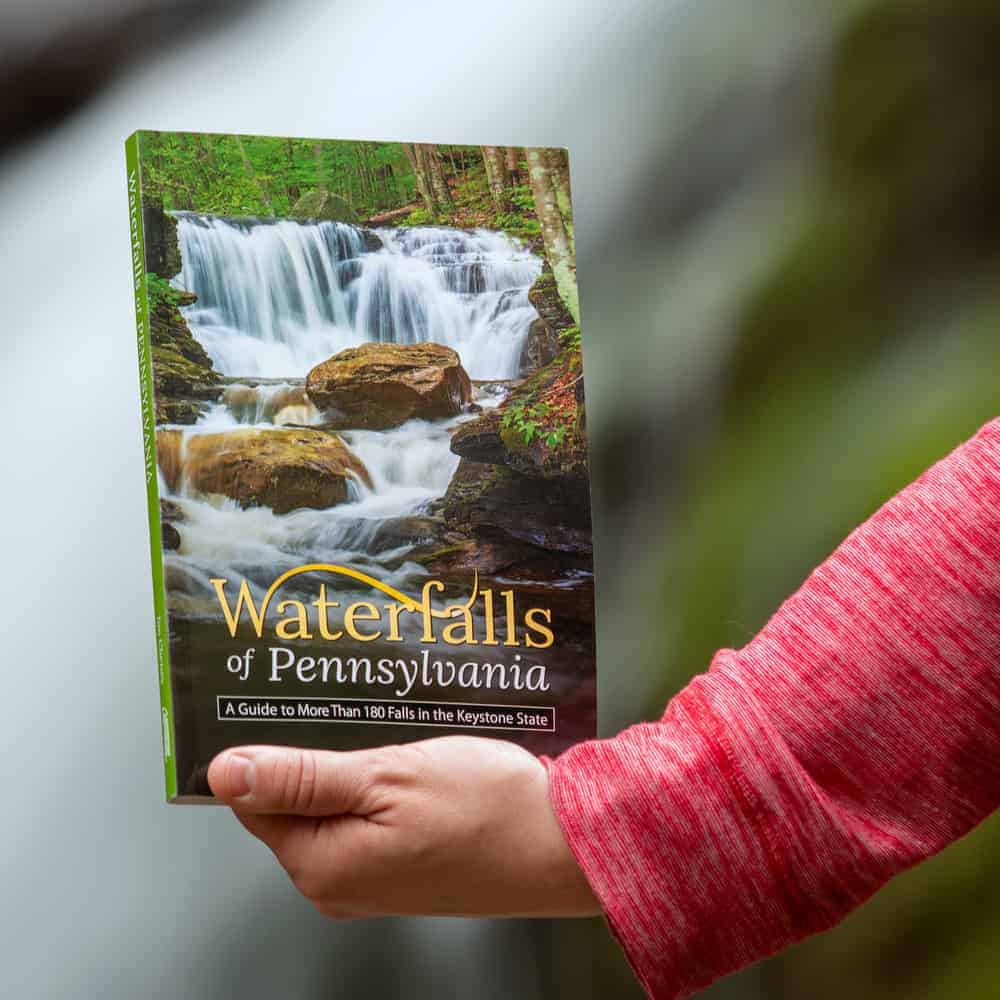
"Waterfalls of Pennsylvania" by Jim Cheney
If you love PA waterfalls, you won't want to miss this waterfall book from Jim Cheney, author of Uncovering PA, featuring more than 180 great waterfalls. Order it now on Bookshop.org or Amazon.
However, despite there being little left of the camp, the four walls are still very cool. It’s really neat to see how the builders of the camp utilized the natural rock outcropping to shape the cabin, and the doorway and windows from the man-made walls are still fully intact.
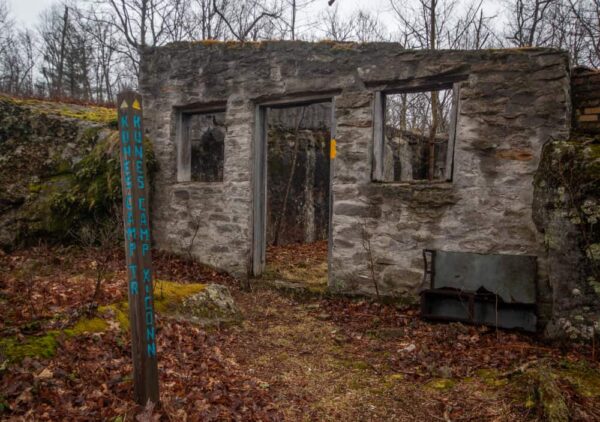
Walking around the outcropping, there are other remnants of the camp, including what was either an underground storage area or an outhouse.
Once you’ve had your fill of Kunes Camp, you can hike back the way you came, or you can do a loop hike with some of the other area trails (The Purple Lizard Map for the Quehanna Wild Area shows several great options).
Unfortunately, unless you don’t mind hiking along the Quehanna Highway for a short distance, none of the other trails from here loop back to the starting point without doubling back on the Kunes Camp Trail.
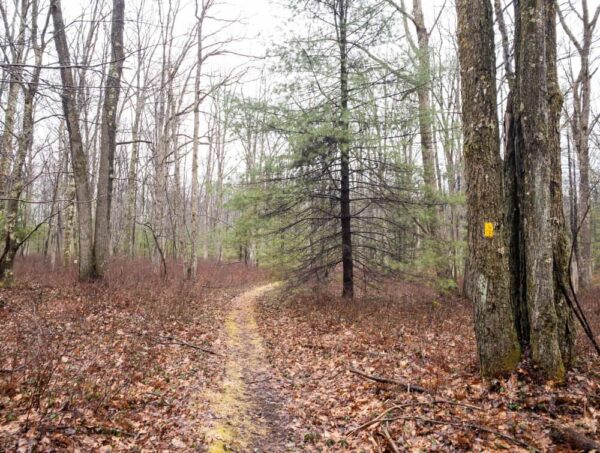
When I visited, I was planning to take a short side trail to the north from the camp area that would have connected to Chipper Road, but this would have added roughly half a mile to my hike, and the impending rain forced me to return the fastest route possible. Hopefully next time I can explore more of the trails around Kunes Camp.
Nevertheless, even just doing the out-and-back 1.8-mile hike was absolutely fantastic. Not only does it give you the chance to hike through the beautiful Quehanna Wild Area, but it also gives you the chance to see one of the most unusual abandoned places in Pennsylvania.
How to Get to Kunes Camp
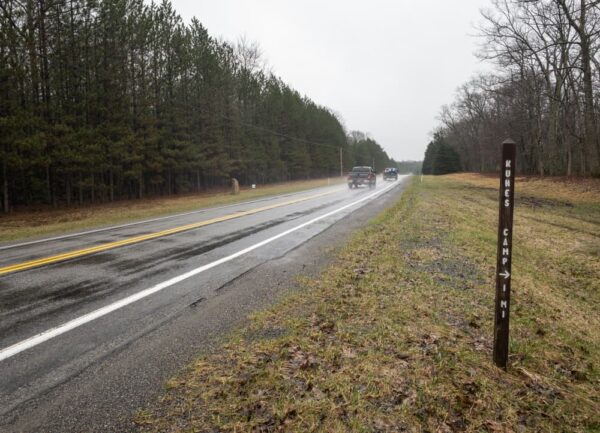
Kunes Camp is located in northern Clearfield County in the southwestern corner of the Quehanna Wild Area.
There is no specific parking area for the Kunes Camp Trail, but there is room to pull off of the road at the trailhead (which is marked with a small sign) at the following coordinates: 41.216500, -78.172600. This is just south of the intersection of Quehanna Highway and Wykoff Run Road.
Be sure to use extreme caution when exiting and entering your car as traffic moves quickly along the Quehanna Highway.
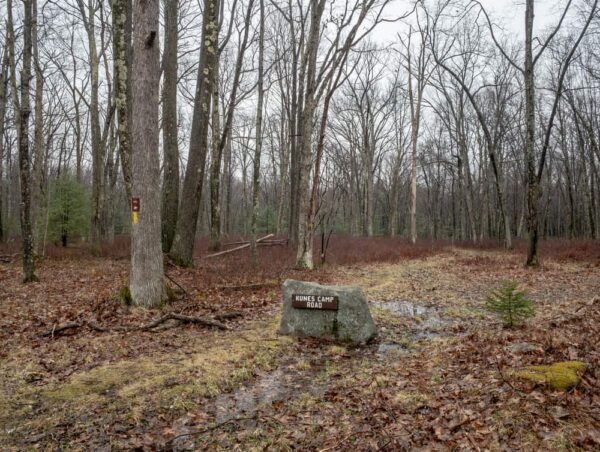
From the parking area, follow the Kunes Camp Trail into the woods for 0.9 miles until the trail passes directly through Kunes Camp.
Kunes Camp can be found at roughly these coordinates: 41.207383, -78.182433.
Looking for more places to visit nearby? Check out Table Falls, the Marion Brooks Natural Area, Round Island Run Falls, and Wykoff Run Falls.
[Click here for information on how to use the coordinates in this article to find your destination.]

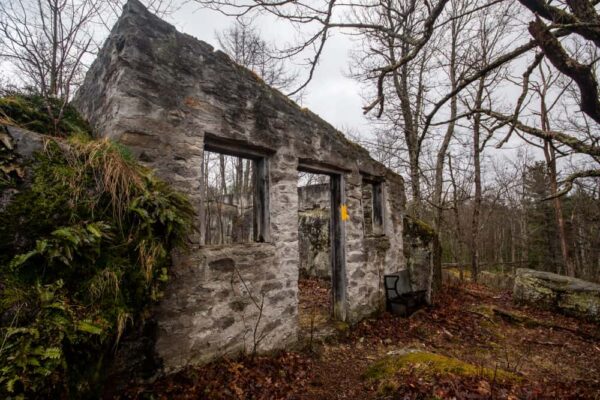
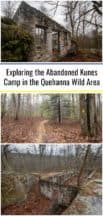
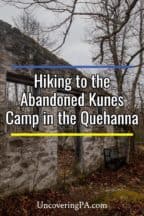
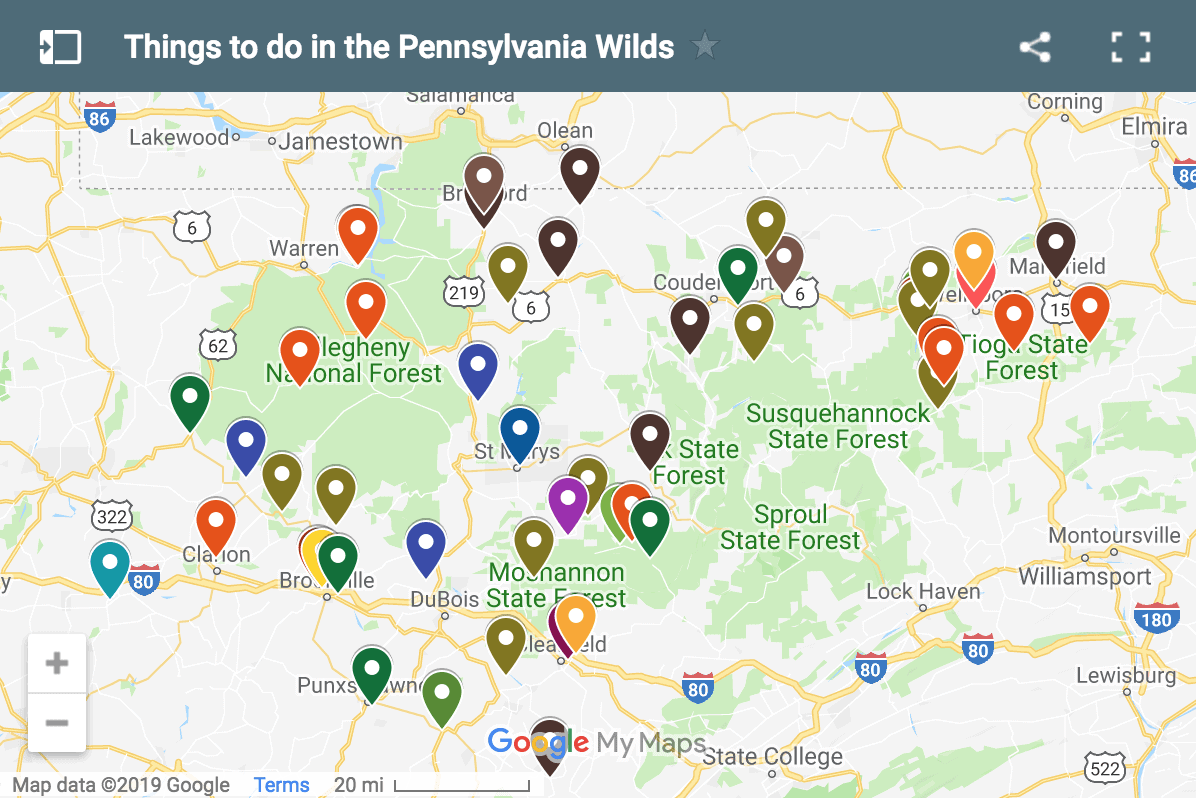 "
"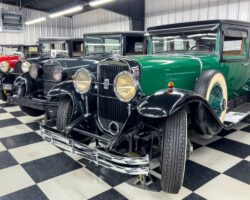
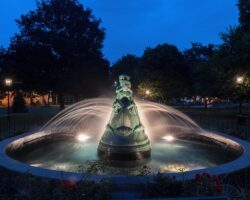
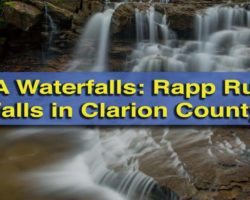
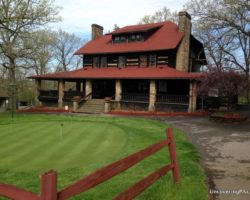

Do you know if the family who owned it is still in the area? It would be awesome to see a couple photos of it when it was complete. It’s pretty unique, I’d imagine if anyone had a photo of it they would have held onto it.
I would ask Pete Bennett. He has done a lot of research on the area and wrote some books about his findings. If he doesnt know he could probably send you in a direction to ask.
I have been camping in nearby Sinnemahoning for over 30yrs. Please beware of the Rattlesnake dens in the big rocks near the kunes camp. Also the bunkers at least the ones I know of up there the property is posted and say something about air traffic control equipment or something that sign just appeared a few years back
There was no sign when I visited them last year. It’s possible they were removed, and I always encourage people to respect any signage that shows up, but there was none there when I visited.
My boys and I were at the test sights in mid-march. No signs saying keep out you just cannot block the gate. We are going to visit Kunes Camp next time we are up there.
The Kunes Family own an apple orchard between Karthaus and Keewaydin, or at least they used to. I worked on the Moshannon State Forest as the Assistant District Forester and about 25 years ago we built some hanging structures in the old test cells to improve the bat habitat, I’m not sure it worked! I don’t know that there was ever any atomic engines tested there, maybe jet engines or rocket engines. Curtis Wright was hoping to get a contract to build a new bomber, but missed out and then gave up the Quehanna site. There was a rector building which contained a swimming pool reactor and a couple “hot cells” which were used for research. Later Martin Marietta became the contractor in charge of the facility, during their time they produced “snap generators” which were used to power lights on buoys and maybe other uses needing small electric generators. Later Permigrain became the contractor in charge and they used the swimming pool reactor to manufacture wood flooring impregnated with a polymer to make the flooring durable. They used cobalt for the source of gamma radiation in the swimming pool reactor. Now the reactor has been decommissioned, removed and cleaned up.
I worked there for 28 years and the snakes were always a problem in the late summer